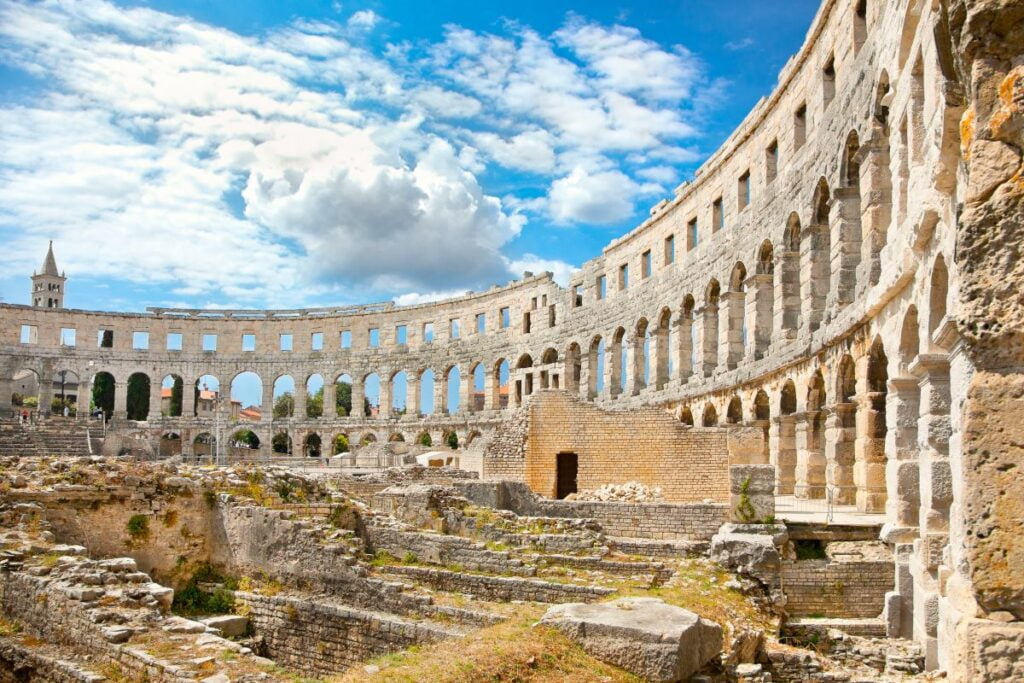Table of Contents
ToggleA Hub of Cultural Heritage
Croatia, a gem nestled on the Adriatic Sea, offers a breathtaking panorama of cultural richness and artistic legacy. This enchanting country, known for its historic cities and UNESCO World Heritage sites, invites visitors to delve into its vibrant cultural tapestry. From the ancient Roman ruins in Split to the Baroque splendor of Zagreb, each corner of Croatia tells a story of centuries-old traditions and artistic endeavors.

Festivals Celebrating Croatian Culture
No exploration of Croatian culture is complete without experiencing its lively festivals. Each year, cities across the country host a variety of events that showcase local art, music, dance, and culinary delights. The Dubrovnik Summer Festival is a highlight, featuring open-air performances set against the stunning backdrop of this medieval city. Similarly, the Split Summer Festival brings the arts to life with theatre productions, concerts, and exhibitions, illuminating the city’s Roman architecture.
The Influence of Music and Dance
Music and dance hold a special place in Croatian culture. Traditional folk music, with its diverse influences from Central European, Balkan, and Mediterranean traditions, echoes through the country’s picturesque landscapes. Instruments like the tamburitza (a string instrument) and the harmonika (accordion) are staples in Croatian music. Folk dances, such as the lively kolo, continue to be a significant aspect of social gatherings and festivals, preserving the dynamic heritage of Croatia.
Check Offer

Visual Arts: A Window to Croatian History
Croatian visual arts offer a window into the country’s complex history, from ancient times to the present. The works of celebrated artists like Vlaho Bukovac and Ivan Meštrović can be viewed in galleries and museums across the country. Bukovac’s contributions to modern Croatian painting and Meštrović’s impressive sculptures not only highlight their individual talents but also reflect the broader artistic movements that have shaped European art history.
Architecture: From Ancient to Modern
Croatia’s architectural landscape is a tapestry of styles that encapsulate its historical and cultural evolution. The Diocletian’s Palace in Split, a UNESCO World Heritage site, is an exemplary fusion of an ancient Roman palace with medieval adaptations. Moving through time, the Renaissance touched Croatia with the construction of significant buildings such as the Cathedral of St. James in Šibenik. Modern architectural endeavors continue to shape Croatian cities, blending contemporary designs with historical contexts.
Art Galleries and Museums
For art enthusiasts, Croatia’s galleries and museums are treasure troves of both classical and contemporary art. The Museum of Contemporary Art in Zagreb offers insight into modern artistic expressions, featuring works by national and international artists. This museum, along with smaller galleries, plays a pivotal role in promoting contemporary cultural dialogues and artistic innovation in Croatia.
Culinary Delights: A Taste of Croatia’s Heritage
Croatia’s culinary scene is as diverse as its culture. The country’s cuisine offers a delightful exploration of flavors that reflect its geographic and historical tapestry. Coastal regions, like Dalmatia and Istria, are renowned for their seafood dishes, made with fresh fish, shellfish, and seasoned with olive oil and local herbs. Inland areas offer hearty meals such as ćevapi (grilled meat sausages) and sarma (cabbage rolls filled with minced meat), showcasing the influence of Central European culinary traditions.
Local Markets and Culinary Tours
Visiting local markets provides a sensory feast and insight into Croatian daily life. Markets such as the Dolac Market in Zagreb offer fresh produce, cheeses, and meats, along with the opportunity to taste local specialties. Culinary tours and cooking classes are also popular, allowing visitors to dive deeper into the Croatian food culture, learning to prepare traditional dishes that have been passed down through generations.
Wine and Olive Oil: Liquid Gold
Croatia is also celebrated for its wine and olive oil production, with vineyards and olive groves spreading across its idyllic landscapes. Wine tours in regions like Istria and Pelješac Peninsula allow enthusiasts to sample indigenous grape varieties like Plavac Mali and Malvazija. Olive oil tastings complement these experiences, showcasing another vital aspect of Croatian gastronomy.
Preserving Tradition and Embracing Modernity
In Croatia, the preservation of tradition and the embrace of modernity occur simultaneously. Traditional crafts such as lacemaking, recognized by UNESCO for its cultural significance, coexist with contemporary art forms. This blend of old and new ensures that Croatian culture remains vibrant and accessible to all generations.
Educational Programs and Workshops
Numerous educational programs and workshops across the country aim to engage locals and tourists alike in the arts. These programs offer hands-on experiences in traditional crafts, painting, sculpture, and more, allowing participants to gain a deeper appreciation of Croatia’s artistic heritage.
Cultural Exchange and Global Recognition
Croatia actively participates in international cultural exchanges, showcasing its arts and traditions on the global stage. Such initiatives not only highlight Croatia’s cultural wealth but also foster a greater understanding and appreciation of its artistic contributions worldwide.
Conclusion: A Cultural Journey Awaiting Discovery
Croatia’s culture and arts scene is a dynamic and integral part of its national identity. Each visit offers a unique opportunity to explore this rich cultural landscape, where history and modernity coalesce into a memorable experience. Whether you are wandering through ancient ruins, enjoying a classical concert in a historic theater, or exploring avant-garde art in a contemporary gallery, Croatia offers endless opportunities to immerse yourself in its distinctive cultural and artistic heritage. This is a journey not just through places, but through time, offering insights not only into Croatia’s past and present but also into the enduring spirit of its people.
Disclosure: This post may contain affiliate links. This means that we get a small commission from any purchase you make, at no additional cost to you!


